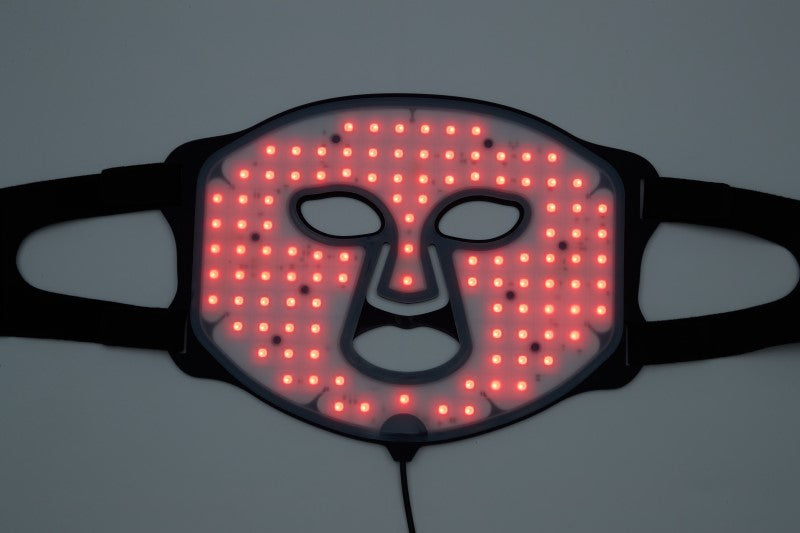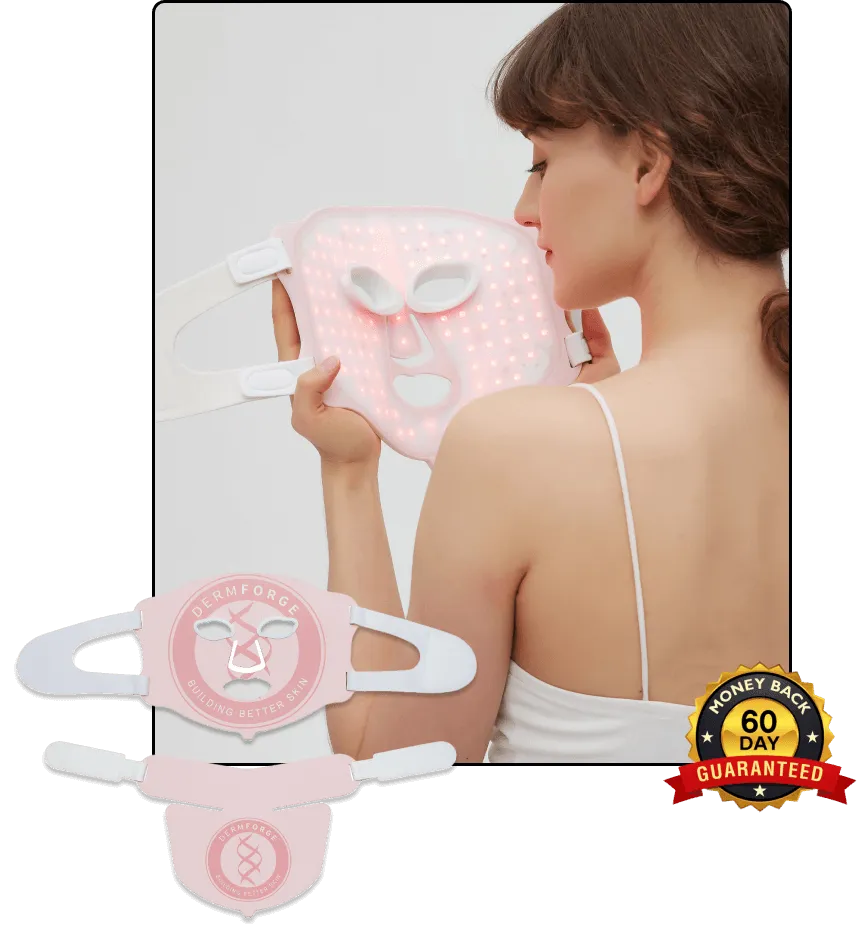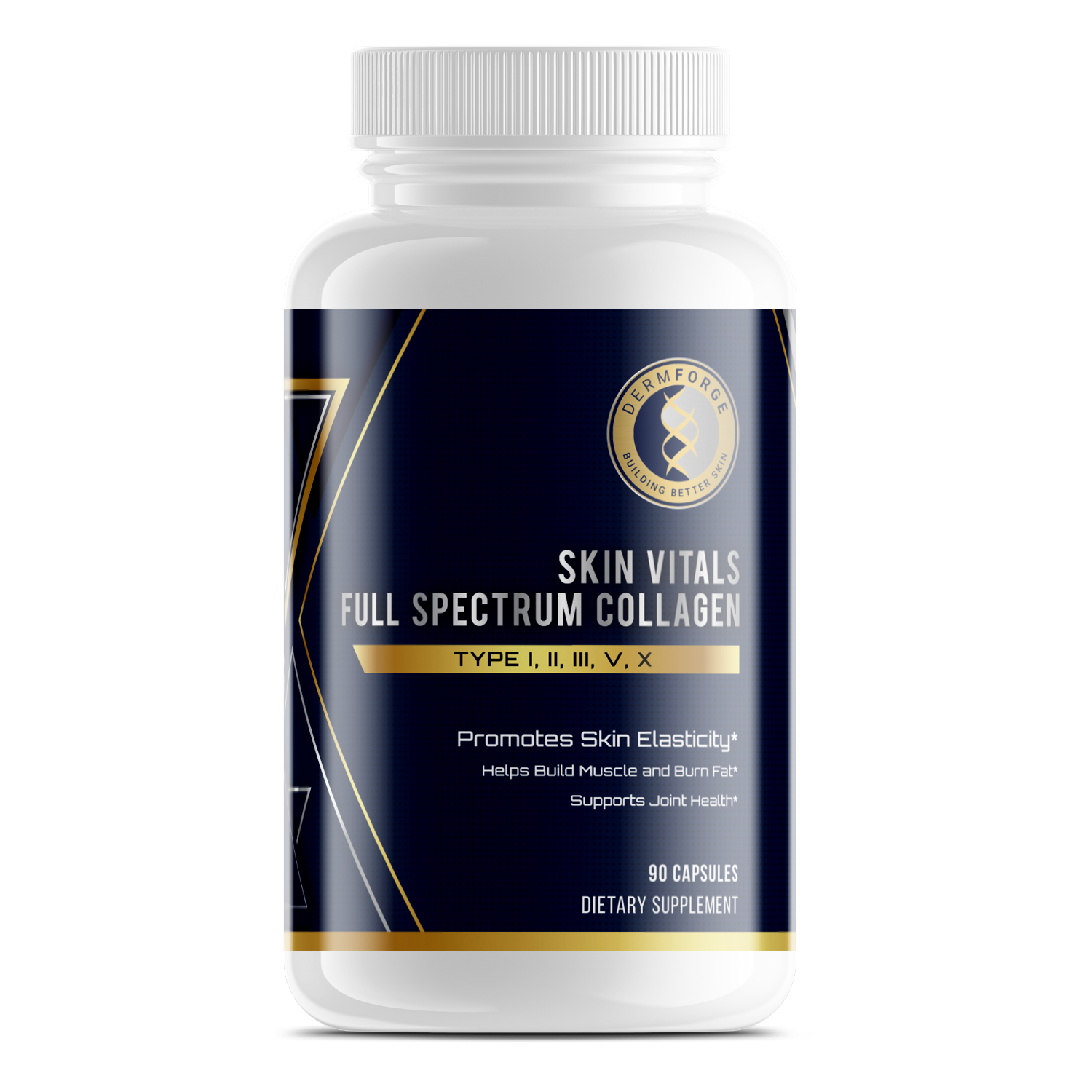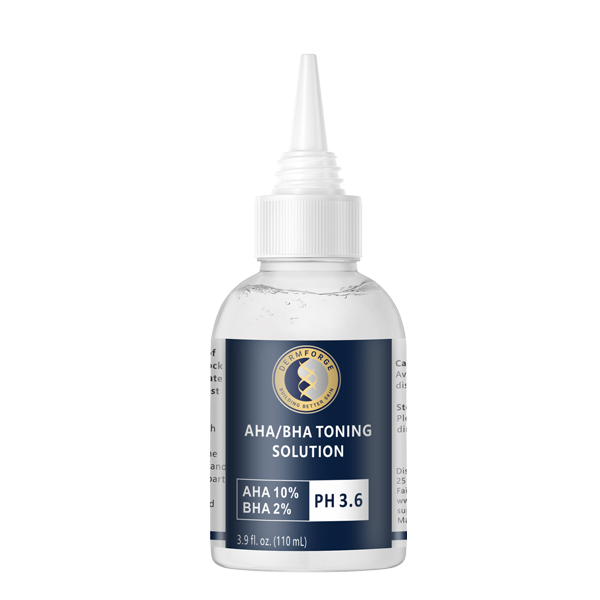Red light therapy continues to attract attention for its effects on aging skin. Many people now turn to it for a red light collagen boost. This approach uses visible light to target deeper layers of your skin without heat or damage. Therefore, it supports your body’s natural repair process in a simple, non-invasive way.
Additionally, red light helps activate fibroblasts, the cells responsible for collagen and elastin. As these cells become more active, skin may feel firmer and appear smoother. Because of this process, users often notice a reduction in fine lines and better skin texture over time.
You can use red light at home or in a clinical setting. Both options support skin structure by increasing circulation and cellular energy. Therefore, it fits well into many skincare routines without requiring large time commitments or frequent appointments.
Market demand for red light devices continues to grow. Many people want long-term results without using harsh products or invasive methods. Red light therapy offers a middle ground that supports gradual but visible improvement. As more consumers seek skin support from within, red light becomes part of that shift.
Additionally, these devices now come in several forms and price ranges. You may find masks, panels, or handheld tools that fit your schedule and budget. Therefore, starting is often more accessible than many people expect.
If you want to improve skin firmness and reduce visible aging, red light may be worth exploring. With regular use, it can support the skin’s natural strength and tone.
What Is Red Light Therapy and How It Works on the Skin
Red light therapy uses specific wavelengths of visible light to reach deeper layers of your skin. These wavelengths usually range from 620 to 850 nanometers. Because they penetrate the skin without causing heat or damage, they are safe for regular use.
Once absorbed, red light stimulates activity within your cells. It affects mitochondria, which are responsible for producing energy inside the cell. Therefore, your skin cells may begin to function more efficiently and repair themselves faster. This process supports overall skin renewal and collagen production.
Additionally, red light therapy helps increase blood circulation in the treated area. More oxygen and nutrients reach your skin, which may improve texture and tone. Therefore, people often notice a smoother appearance and less visible fine lines over time.
Collagen is a protein that supports skin strength and firmness. As you age, your collagen production slows down. However, red light therapy can help reverse that trend. It activates fibroblasts, the cells responsible for producing collagen and elastin.
Because of this response, many people use it as a red light collagen boost. The goal is to restore volume, improve elasticity, and support long-term skin health. Consistency matters, so regular sessions provide better results over time.
You can use red light therapy at home or through professional services. Both methods aim to deliver light deep enough to stimulate change. Therefore, understanding the basics helps you use it more effectively.
Whether you want to support aging skin or maintain a youthful look, red light offers a simple, non-invasive option worth considering.
The Science Behind Red Light Collagen Boost and Skin Rejuvenation
Red light therapy supports skin renewal through a simple biological process. When light reaches your cells, it stimulates natural energy production. Therefore, your skin begins to repair itself more effectively and at a faster pace.
One of the key players in this process is the fibroblast. Fibroblasts are skin cells that produce both collagen and elastin. When exposed to red light, these cells become more active. Because of this response, you may notice firmer skin and fewer wrinkles over time.
Additionally, red light increases blood flow to the treatment area. Better circulation means more oxygen and nutrients reach your skin cells. Therefore, your skin can rebuild its structure more efficiently and maintain hydration more easily.
This process also reduces inflammation, which can damage skin over time. Lower inflammation levels help protect collagen from breaking down. As a result, your skin can maintain firmness longer without external fillers or invasive treatments.
Many people seek out red light therapy specifically for its collagen-boosting effects. This approach is often called a red light collagen boost. It offers a simple, non-invasive way to support skin structure using your body’s own biology.
Consistency is key when using red light therapy. Regular sessions encourage stronger, healthier skin that maintains elasticity and tone. Therefore, results tend to improve with steady use over several weeks.
You can include this therapy as part of a broader skincare routine. Combined with hydration and healthy habits, it can support visible skin improvement. If you’re looking for a natural way to support skin health, red light may offer real benefits.
Benefits of Red Light for Aging, Wrinkles, and Skin Firmness
Red light therapy offers clear benefits for visible signs of aging. Many people use it to support firmer, smoother-looking skin. As collagen breaks down with age, skin loses elasticity and structure. Therefore, red light helps by stimulating the cells that produce new collagen and elastin.
Additionally, consistent use may reduce the appearance of fine lines and wrinkles. Because the skin becomes more elastic, creases may soften over time. This process works gradually but can lead to lasting improvements in tone and firmness.
Red light therapy also supports better hydration and circulation. Therefore, your skin may appear brighter and more even in color. Some users report that dull areas become more vibrant after regular treatments. These improvements often result from increased blood flow and cellular repair.
A red light collagen boost can help strengthen the deeper layers of your skin. This foundation supports a smoother surface without relying on surface-level treatments. Therefore, you may see lasting changes that come from within your skin structure.
Additionally, red light therapy is gentle and suitable for most skin types. You can use it regularly without causing irritation or sensitivity. Many people find it pairs well with other skincare habits like moisturizers or serums.
Your results may build slowly, but consistency matters more than intensity. Therefore, stick to a schedule and allow time for your skin to respond. Over several weeks, you may notice better firmness, fewer fine lines, and improved skin texture overall.
Comparing Red Light Devices: Home Use vs. Professional Treatments
Red light therapy devices come in many forms. You can choose between home-use models or professional treatments from clinics or med spas. Each option works differently and offers unique advantages depending on your goals and lifestyle.
Home devices typically use lower light intensity. Therefore, they require more frequent sessions to achieve visible results. Most people use these devices several times per week. Because they are convenient, many users stay consistent with treatments.
Professional treatments offer stronger output and broader coverage. These sessions often reach deeper layers of skin in less time. Therefore, you may notice results sooner with fewer treatments. However, you must schedule visits and may pay more per session.
Additionally, clinical devices often target large areas at once. That makes them ideal for full-face or body treatments. Home models may treat smaller areas and take more time. Therefore, treatment planning depends on your available time and desired coverage.
A red light collagen boost can work with either method. The difference lies in how quickly you see results and how much time you invest. If you want a faster outcome, professional treatments may work better. However, consistent home use also supports long-term results.
Many people start with a home device to build the habit. Then they use occasional professional sessions to boost results. Both approaches can support skin firmness, smoothness, and better tone. Therefore, your choice depends on budget, time, and skin needs.
With either method, regular use matters most. Your skin responds best when treatments are consistent, safe, and targeted to your goals.
How Often to Use Red Light Therapy for Collagen Support
Consistency plays a key role in getting results from red light therapy. To support collagen production, you need a regular treatment schedule. Most home users start with sessions three to five times per week. Each session usually lasts between 10 and 20 minutes.
Therefore, daily use may lead to faster improvements. However, more is not always better. You should give your skin time to respond between sessions. Taking a short break every few days may help balance results with long-term maintenance.
Professional treatments require fewer sessions due to higher light intensity. You may start with one to two treatments weekly. Then you can switch to monthly maintenance once results begin to show. However, always follow the guidelines provided with your specific device or service.
A red light collagen boost takes time to build. Collagen production increases slowly and requires steady stimulation. Therefore, missing sessions may delay results or reduce visible progress. You’ll get the best outcomes by keeping a consistent weekly routine.
Additionally, improvements may take several weeks to appear. Many people notice subtle changes after four to six weeks. Skin may feel firmer, smoother, and more hydrated. These changes often become more visible with continued use.
You can use red light therapy as part of your overall skincare plan. Pairing it with hydration, sleep, and nutrition may support even better results. Therefore, treat it as a long-term investment in your skin’s health.
Stick with your plan and monitor how your skin responds. Small improvements often build into noticeable changes with regular use over time.
Market Demand and Growth of Red Light Collagen Products
Consumer interest in red light therapy continues to grow. More people now look for non-invasive ways to support long-term skin health. Therefore, red light devices have become a fast-growing category in both beauty and wellness markets.
Additionally, shoppers want products that offer visible results without complex routines. Red light therapy fits this need well. You can use it at home with minimal effort, which supports consistent habits. As a result, at-home devices have gained strong market traction.
Red light collagen boost products now appear in spas, dermatology offices, and retail shelves. Demand has expanded beyond medical settings into personal care and lifestyle categories. Therefore, brands that meet both quality and ease-of-use expectations see more repeat customers.
More consumers also want natural solutions for aging skin. Instead of choosing fillers or surgery, many turn to red light for gradual improvements. This shift has fueled product development across masks, panels, and portable devices.
Additionally, product marketing often highlights clean technology and minimal side effects. That appeals to health-conscious buyers looking for alternatives to topical or chemical treatments. These trends reflect changing values among skincare buyers of all ages.
Red light products also benefit from word-of-mouth and social sharing. Visible results help build trust, which fuels more interest. Therefore, device sales have continued to rise year after year across multiple segments.
As consumers continue to seek simple, effective solutions, red light therapy remains in demand. A red light collagen boost meets that interest through both convenience and function.
Conclusion
Red light therapy offers a clear path for supporting long-term skin health. It works with your body’s natural systems to restore structure. Therefore, many people now choose this option to support firmness, hydration, and visible skin tone improvement.
Additionally, consistent red light use may reduce fine lines and boost elasticity. These results build gradually, making steady use important. You can use a device at home or schedule sessions at a clinic. Either method supports your goals when used regularly.
Many users prefer the ease of integrating treatments into their routine. Because sessions are short and non-invasive, they are easy to maintain. Therefore, red light has become a practical addition to many daily wellness plans.
You may want to pair treatments with skincare or hydration habits. This combination supports better outcomes and helps you get more from your efforts. Over time, you may begin to notice firmer skin and smoother texture.
Consumer demand continues to grow for tools that promote natural repair. A red light collagen boost offers that benefit through safe, direct skin support. It’s not an instant fix, but it encourages your skin to work more efficiently.
Therefore, if you’re seeking a solution for aging skin, red light may be worth trying. The key is staying consistent with treatment and realistic about the timeline. With regular use, the improvements you see may be gradual but noticeable.
Keep your routine simple and your goals focused. Over time, small changes in texture and tone often lead to more confident, healthy skin.







